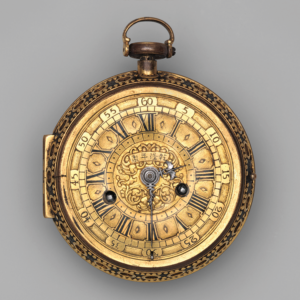A capstone seminar takes students on a multidimensional exploration of a universal theme.

Qianlong era
Is time real or illusory? Subjective or objective? What does it mean for the individual, and for the planet? How do concepts of time differ across cultures?
These are just some of the questions a group of seniors tackled in The Time of Our Lives, a spring core distinction seminar. Team taught by Lecturer in the Division of University Studies Ferdinand von Muench and Professor of Biology Krista Ingram, the course featured faculty members from biology, music, geology, physics, philology, and psychology as guest experts at individual sessions.
The concept, von Muench says, was born out of discussions among faculty and staff members and students about the “big issues” in liberal arts education. “Time is something we’re all wrestling with in different ways. It’s important from a professional perspective, but also from a lived-experience perspective.” In spring 2018, as part of the ongoing revision process of the core curriculum, he and Ingram, along with their colleagues Ben Child, Seth Coluzzi, Regina Conti, and Santiago Juarez, convened a project titled “Core ‘Time’: Time in Nature, Culture, and the Arts.” That collaboration in turn inspired last spring’s core seminar.
Time was baked into every aspect of the course, including when and for how long class was held. The typical 50-minute format would have been too constrained, Ingram explains. “Our class is discussion based, so we thought it was important to have the luxury of time to pursue our thoughts.” The class met on Tuesdays from 7–9:30 p.m., with a break for a snack and informal conversations about that evening’s topic. “Often we wouldn’t get home until after 10,” says von Muench. “We were always still talking as we walked out the door.”
Students didn’t just study time, they experienced it — for example, by traveling from bucolic Hamilton to turbo-charged New York City. There they saw performances of Swan Lake and Haydn’s Symphony 101 (known as “The Clock”) as well as an exhibition featuring clocks at the Metropolitan Museum of Art. To prepare, they read about the geography of time — how the pace of time differs from town to city, from culture to culture.
That trip eased the sudden switch to remote learning in March. New York City had provided a bonding experience, von Muench says, and students were able to channel their sense of connection into the Zoom environment. Sheltering in place also pushed the “highly scheduled” students to note their own relationship to time — and the fact that it is socially constructed. “They realized how much of our time is always spoken for, and how different things look when that framework falls away,” he says.
For their final project, Lindsey Johnson, a peace and conflict studies and Russian and Eurasian studies double major, and Claudia Greco, an international relations and Spanish double major, took a historical approach, creating a website that compares the simultaneous experience of “crisis time” and “clock time” during World War II and the current pandemic. Meanwhile, Kendra Jeans, a biochemistry major, and Courtney Casale, a behavioral neuroscience and Russian and Eurasian studies double major, combined their dual passion for science and the arts by conducting a survey of Colgate students’ perception of time and then producing a video in which dancers performed interpretive works representing the data. The range of disciplines the course exposed them to “highlighted the interconnectedness of learning,” Jeans says. “We never considered time from one point of view, but linked them together.”
This was no accident, says Ingram. “The foundation of a liberal arts education is not to specialize in one thing, because there are many ways to approach any problem. Given today’s complex problems, students’ ability to respect the values and limitations of multiple disciplines is important. We wanted to model that.”
